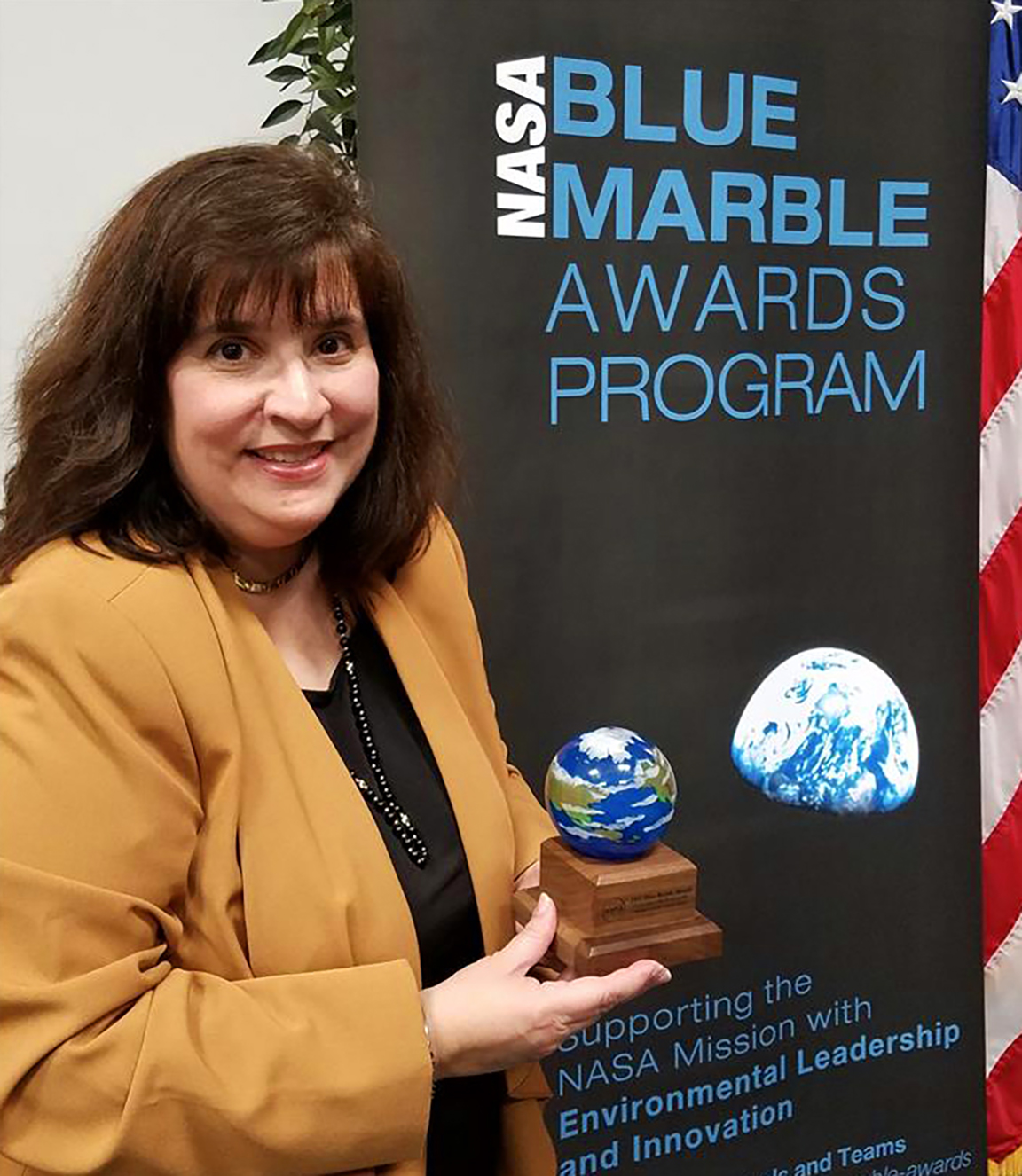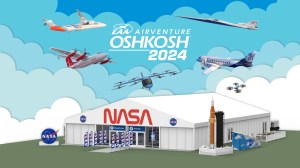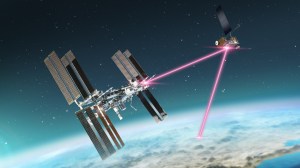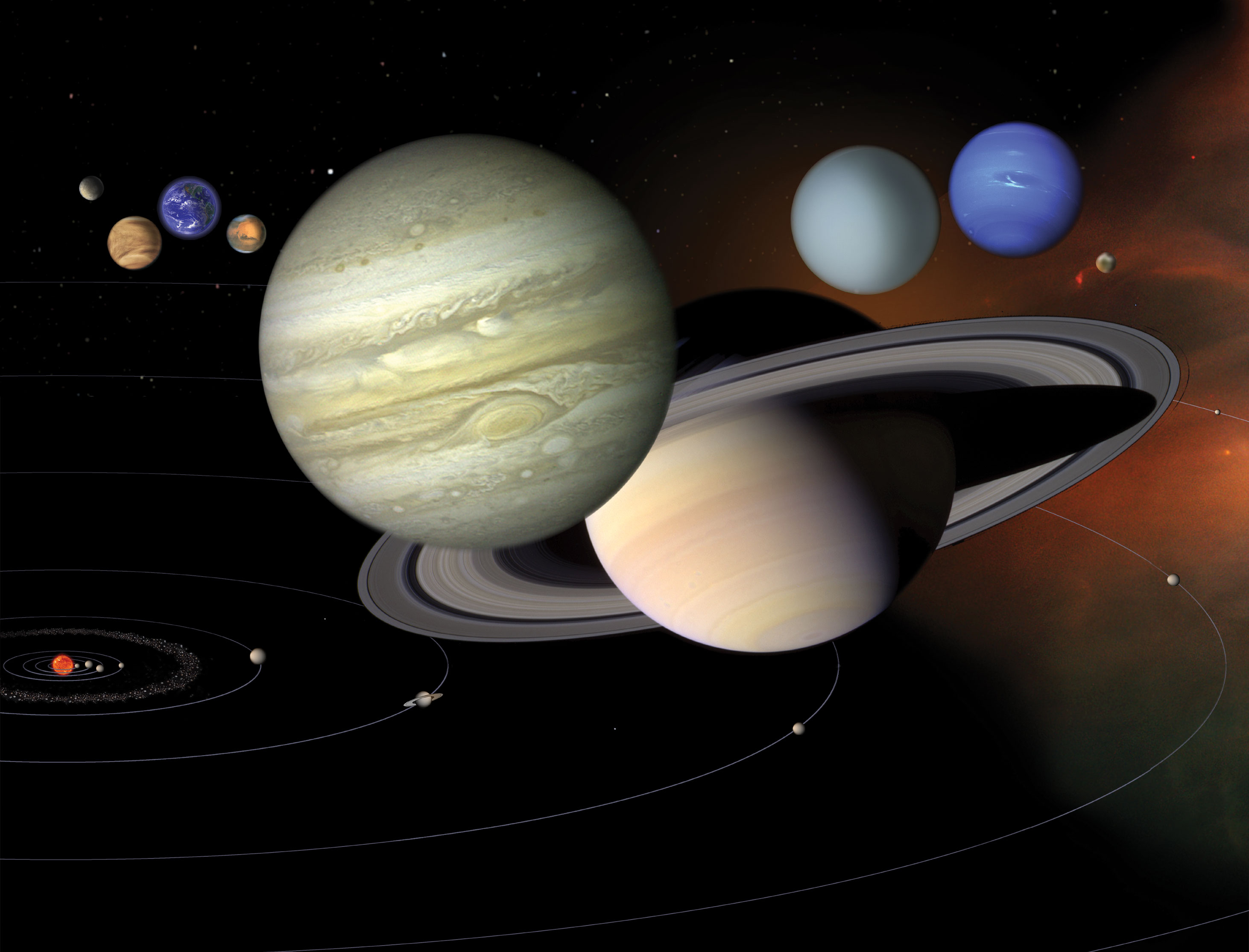At just 9 years old, Gaudy Bezos-O’Connor was captivated by the Apollo 11 astronauts’ view of our planet as they stepped foot on the Moon for the first time. Those images ignited a lifelong passion for exploration and innovation.
That drive persisted: today she is project manager for the Electrified Powertrain Flight Demonstration, or EPFD. Her role is to help guide the team working to enable a new generation of megawatt-class, electric-powered aircraft.
Reaching this point in her career involved a journey that spanned a wide range of engineering opportunities, all fueled by those images from Tranquility Base and an innate curiosity for seeing the world through different lenses.
“For the longest time I remember saying I want to become an astronaut,” Bezos-O’Connor said. “I loved math and science and decided from that moment I wanted to see the Earth from the Moon someday.”
In high school, Bezos-O’Connor decided the astronaut life was not her calling and began pursuing her passion from a different perspective: Rather than become an astronaut and go to space herself, she wanted to help design the technologies to get them there.
Finding her place in the world of engineering, Bezos-O’Connor attended Rensselaer Polytechnic Institute in Troy, New York, where she earned her bachelor’s degree in aeronautical engineering.
From spending her days researching the physics of how objects fly to building and testing hardware in wind tunnels, she quickly discovered the true value of applying classroom knowledge in the real world.
Hands-On Experience
“It was really important for me to have that experimental, tactile experience,” Bezos-O’Connor said. “It was that hands-on experience I had while in college that got me my first job at NASA.”
In 1983, Bezos-O’Connor joined NASA’s Langley Research Center in Virginia, where she launched her career as an aerospace engineer.
Working in experimental aerodynamics, building models, and conducting flight test experiments in wind tunnels, she got her first real experience as a NASA aeronautical innovator.
Her contributions at NASA helped develop operational recommendations that the airline industry would eventually implement.
“That was the first collaborative program I was part of, and it started my path working with industry hand-in-hand,” Bezos-O’Connor said. “It was very rewarding to have just come out of college and be part of something that helped commercial aviation.”
Throughout her career, Bezos-O’Connor has played a number of different roles that pushed her out of her comfort zone and shaped her into a risk-taker.
Following her introduction to aeronautics at NASA, Bezos-O’Connor temporarily switched gears to join the agency’s space program, working on STS-134, the second-to-last flight of space shuttle Endeavour.
Later returning to the sustainable aviation world, she took on new leadership roles with the Federal Aviation Administration’s Continuous Lower Energy, Emissions, and Noise program; NASA’s Advanced Air Transport Technology project; and NASA’s Environmentally Responsible Aviation project.
And she did this while earning her master’s degree in engineering management from Old Dominion University.
A New View
Through her experiences, Bezos-O’Connor saw the aerospace industry from several vantage points that shaped her role as a leader and equipped her with new knowledge and tools to share with others.
“I want to help make a difference and shine light on others,” Bezos-O’Connor said.
A key tenet for me is being a servant leader so that I help people grow and be successful in what they do. It's really about how I can make other people feel that they've met their aspirations and career goals, and that they get the recognition they deserve.
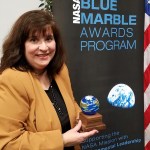
Gaudy bezos-o'connor
Electrified Powertrain Flight Demonstration project manager.
As EPFD project manager, today she leads a diverse team of individuals from multiple disciplines spanning four NASA centers and two industry flight demonstration teams across the country.
The goal is to conduct ground and flight demonstrations of electrified aircraft propulsion technologies and help transition them to the U.S. aviation fleet.
Taking on this role in the midst of the COVID-19 global pandemic, Bezos-O’Connor was forced to navigate her team through a virtual work environment, ensuring key milestones in the project’s early stages were achieved.
Trading conference rooms for laptop screens and physical design boards for virtual collaboration tools, she created a comfortable workspace for her team to thrive in with the help of a little humor and lightheartedness along the way.
Despite not being able to physically see each other in person, her team was able to identify key technical performance requirements and select two industry partners to join the EPFD project, all within less than nine months of work. This was a critical step in helping NASA’s electrified aircraft efforts take flight.
“This to me is a testament to the innovation and commitment my team has to making a difference and enabling NASA to be a catalyst for the transformation that’s required to reduce our carbon footprint,” Bezos-O’Connor said. “We provide the most fuel-efficient airplanes and at the end of the day help the public be able to fly for less cost. It’s been a great experience.”
Throughout her career thus far, Bezos-O’Connor has maneuvered her dreams full circle and challenged herself to step into the unknown, see life from different vantage points, and discover what she is capable of.
Her advice to others? Don’t be afraid of a little turbulence or change of direction in your career path. Use your accomplishments to fuel yourself, strive for excellence in everything you do, and always remain a lifelong learner.
“You have to believe in yourself and be proud of the work you do,” Bezos-O’Connor said. “You will fail, but you have to learn from those failures. Learning doesn’t stop once you’ve received your degree. I’m always trying to expand my knowledge because there is always something new to discover.”


























